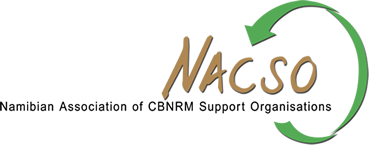
NACSO’s Matthew Walters relates his experience of adding to Namibia’s ecological database.
“In the time that I have worked for NACSO under the Donald Hamer Conservation Leadership Programme, I’ve had several opportunities to go out into the field, mainly to participate in areas related to natural resource management and business/livelihood development. In the times that I have been out in the field, I have been able to participate in the emerging atlasing sector of Namibia. In response to the article written by Alice Jarvis about atlasing, I thought that it would be beneficial to detail my experience of atlasing -- through the use of the Environmental Information Service of Namibia website and through the use of the new Atlasing in Namibia App.
A prime example would be the atlasing that took place on the recent game count that occurred in the Kunene and Erongo Regions of Namibia. The annual Northwest Game Count is the largest road-based game count in the world, in an area stretching from the vicinity of the Spitzkoppe to the Kunene River. The main purpose of the game count is to estimate the populations of wildlife in each conservancy (mainly plains game) as a part of the larger adaptive management spectrum.
Several colleagues and myself knew that the larger mammal species would be widely scattered in the arid western regions of Namibia, so we decided that we would devote a large percentage of our free time in searching for alien plants, reptiles, and the other smaller mammals.
Most often as not we would simply walk around to see what we could possibly discover, and the opportunities that would present themselves were quite remarkable at times. One could be walking in the vicinity of Spitzkoppe and suddenly notice an Elephant Shrew scurrying off into a burrow. You could be driving on a route close to Dorob National Park and notice a cluster of Springhare burrows. We even laid out small mammal traps to see what species of mice, rats, shrews and elephant shrews we would be able to find while we were camping in the different areas (all small mammals were released once they were identified). It is quite evident that the opportunities are limitless if you venture on a quest to find evidence of mammals, snakes, non-snake reptiles, marine mammals, and even alien invasive plants.
The entry of the data is quite simple. For myself I use a mixture of uploading my data, either through the app or using the website. The app is fairly quick and easy to use and is beneficial if you are taking a stroll through an area and you happen to notice a particular species. The website may be a lengthier method of entering data, but it has its own benefits. For one, if you’re driving along a national road and notice a Warthog next to road, you can’t just use your phone to log the sighting (a GPS to quickly log the coordinate should suffice). Secondly, if you don’t know what species you’re looking at, you can simply take a photo of the species and log it on the website once you have all the right resources to identify it.
The reward of logging a species in new areas (especially if it is one which you have never logged before) is the driving force for many of us at the NACSO/WWF office. What is also noticeable is the “slow-but-sure” learning of how to identify certain species of animals. We can devote hours studying each others' pictures trying to see (for example) whether the gecko on the screen is a Barnard’s or a Boulton’s Namib Day Gecko or whether the Ground Squirrel that was observed is a Cape Ground Squirrel or a Mountain Ground Squirrel (difficult to determine when the only distinguishing feature on the Mountain Ground Squirrel is the three black stripes on the white tail hairs).
There are other rewards for doing the atlasing. For instance, you can get see yourself ‘climbing the ranks’ as you track your progress on the Recorder Rankings; the friendly competition between colleagues and friends is already a worthy topic on its own. Another benefit is that you may get to log a first-time record for a particular area for a particular species and you can then reap the satisfaction by seeing the distribution map of these species slowly starting to take shape. Finally, you can simply take pleasure in seeing the different areas you’ve travelled to in this vast country simply by seeing a map of your own records.
I would encourage anyone who has a keen interest in animals to participate. Every small contribution is needed to understand the bigger picture of our Namibian wildlife.”

